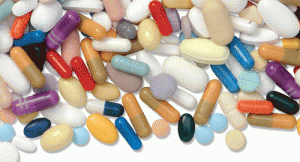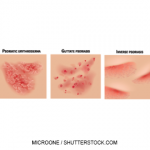 Treating Teenagers with Ustekinumab
Treating Teenagers with Ustekinumab
The results of a Phase 3 study treating adolescents with ustekinumab for moderate to severe psoriasis were recently published. In this study, patients (n=110) age 12–17 years old were randomized to receive ustekinumab or a placebo.1
Ustekinumab doses were 0.75 mg/kg (the standard dosage for patients weighing less than 60 kg), 45 mg fixed (for patients weighing greater than 60 kg, but less than or equal to 100 kg) and 90 mg fixed (for patients weighing more than 100 kg). A half-standard dose was also used: 0.375 mg/kg for patients weighing less than 60 kg; 22.5 mg for patients weighing greater than 60 kg, but less than or equal to 100 kg; or 45 mg for patients weighing more than 100 kg. Patients received ustekinumab at Weeks 0, 4 and every 12 weeks; or placebo at Weeks 0 and 4 with crossover to ustekinumab (standard or half dose) at Week 12.
Clinical assessments included the proportion of patients achieving a Physician’s Global Assessment of cleared/minimal (PGA 0/1), at least 75% improvement in Psoriasis Area and Severity Index (PASI 75) and at least 90% in PASI (PASI 90). Adverse events were monitored through Week 60.
Baseline demographics were similar across treatment groups. The mean age was 15.2 years, with most patients being 15–17 years old (n=77). Mean body weight was 65 kg, with 51 patients (46%) weighing ≤60 kg, 56 (51%) weighing >60 kg but ≤100 kg, and three patients (3%) weighing >100 kg.
At Week 12, 68% and 69% of patients receiving ustekinumab half and standard dose, respectively, achieved PGA 0/1, compared with 5% (P <0.001) of placebo-treated patients. Significantly greater proportions of ustekinumab-treated patients achieved PASI 75 (half-standard dose, 78%; standard dose, 81%; placebo, 11%) or PASI 90 (half-standard dose, 54%; standard dose, 61%; placebo, 5%) at Week 12 (P<0.001).
The rates of adverse events were similar across the groups. The most common adverse events were nasopharyngitis, upper respiratory infection and headache. Two serious adverse events reported were pyelonephritis and an ear infection. There were a total of 508 ustekinumab injections, and only one injection-site reaction. There were no active tuberculosis cases, anaphylactic reactions, malignancies, opportunistic infections or serum sickness-like reactions through Week 60.
Overall during a year of treatment, ustekinumab was well tolerated by adolescents with responses comparable with those of adults and no unexpected adverse events.
Analgesic Combination in Phase 2 Trials
HTX-011 is in Phase 2 clinical trials. It’s a long-acting formulation of 200 mg bupivacaine or 400 mg bupivacaine with meloxicam given once during surgery for managing post-operative pain.2 Pain intensity scores within the first 24, 48 and 72 hours post surgery were significantly reduced. And the amount of time for the use of the first opioid pain treatment post surgery was increased (48 hours vs. eight hours for placebo-treated patients, P<0.0001). Additionally, 32% of patients received no opioids within 72 hours of their operation, compared with 5% of placebo-treated patients (P<0.0001).



